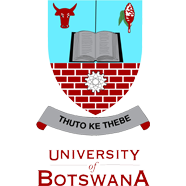The effects of cattle-goat mixed grazing on steer performance and rangeland

View/
Date
2013-09-12Author
Monametsi, N.F.
Makhabu, S.W.
Mogotsi, K.
Publisher
University of Botswana, www.ub.bwRights
Authors who publish with this journal agree to the following terms: Authors retain copyright and grant the journal right of first publication with the work simultaneously licensed under a Creative Commons Attribution License that allows others to share the work with an acknowledgement of the work's authorship and initial publication in this journal.Metadata
Show full item recordAbstract
Cattle and goats mixed grazing trial was carried out at Impala Research Station from January 2007 to October 2010, to determine the influence of different combinations of cattle and goats ratio on the performance of cattle as well as herbaceous basal cover in a mixed Mopane bushveld in north-eastern, Botswana. Treatments of cattle to goat ratios used were 0:0 (control), 0:1, 1:0, 1:1, 2:1, and 3:1 at a stocking rate of 12Ha/LSU in respective paddocks. A total of 51 Tswana male cattle weaners and 75 male and female Tswana goats were used and allowed to graze continuously for 18 months covering both wet and dry seasons after which steers were replaced by other set of weaners. Only steers were weighed
every 4 weeks after feed and water had been withheld overnight. Overall there was no significant difference (P>0.05) in growth between the steers in different paddocks for the two batches of animals used. However, there was a significant difference in steer growth between grazing ratios 1:0, 1:1, 2:1 and 3:1 during the dry season (P<0.05) for both batches. There was a significant increase (T = -8.71, P < 0.00) in poor grass species in all the paddocks, a significant decrease (T = 2.48, P < 0.05), in litter for ratios 1:0, 1:1 and 2:1 as well as significant decrease (T = 3.60, P < 0.05), in bare ground for
grazing ratios 0:1, 1:1 and 3:1 between 2007 and 2009. There was also a significant increase (T= -7.56, P <0.05) of total covers from 2007 to 2009. Cattle to goat grazing ratios 2:1 and 3:1 showed high weight gains in steers compared to steers in grazing ratios 1:0 and 1:1. The study shows that mixed grazing gives an advantage on complementary use of pasture resource by different livestock species especially during resource limited periods.
Collections
- OJS imports [361]
